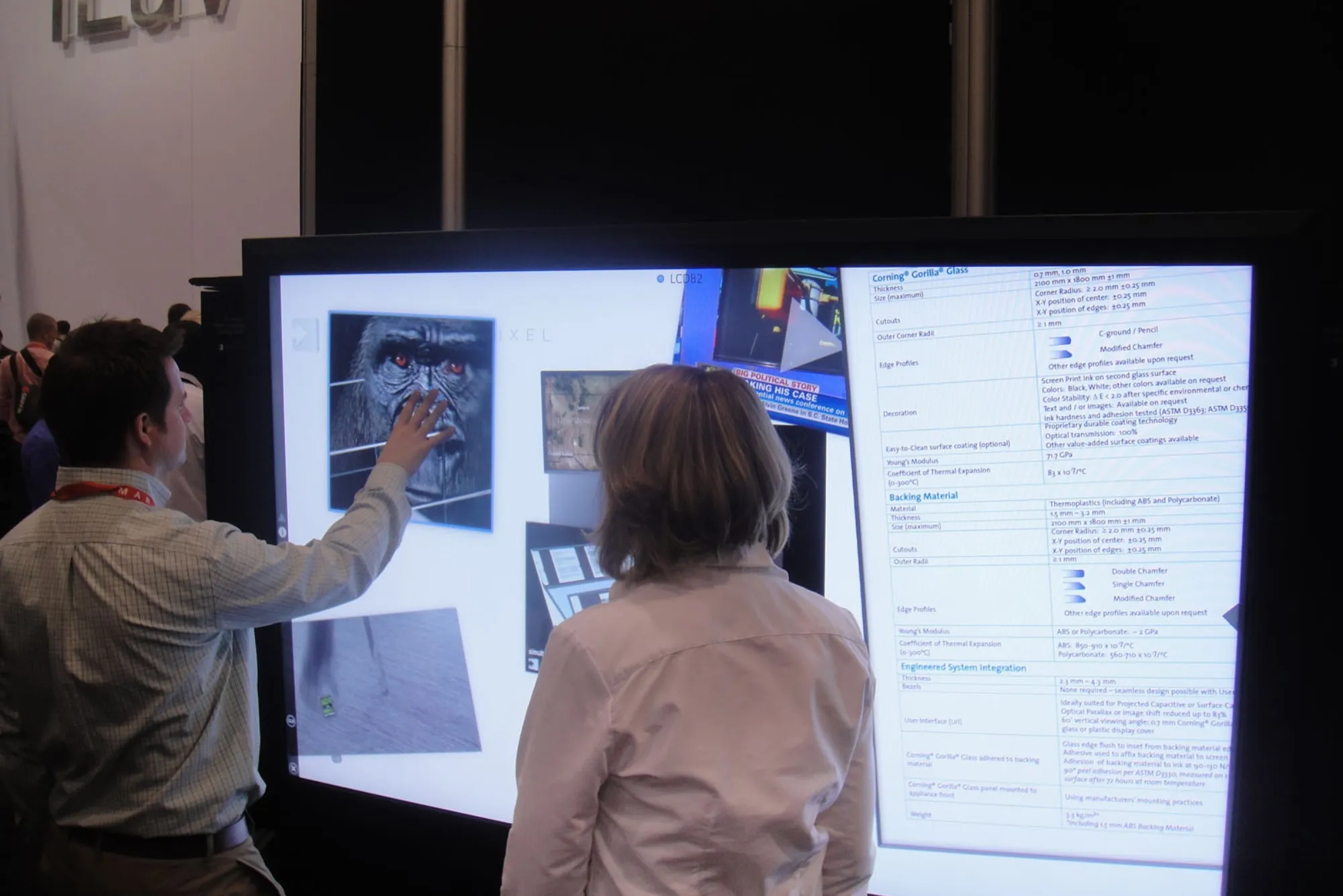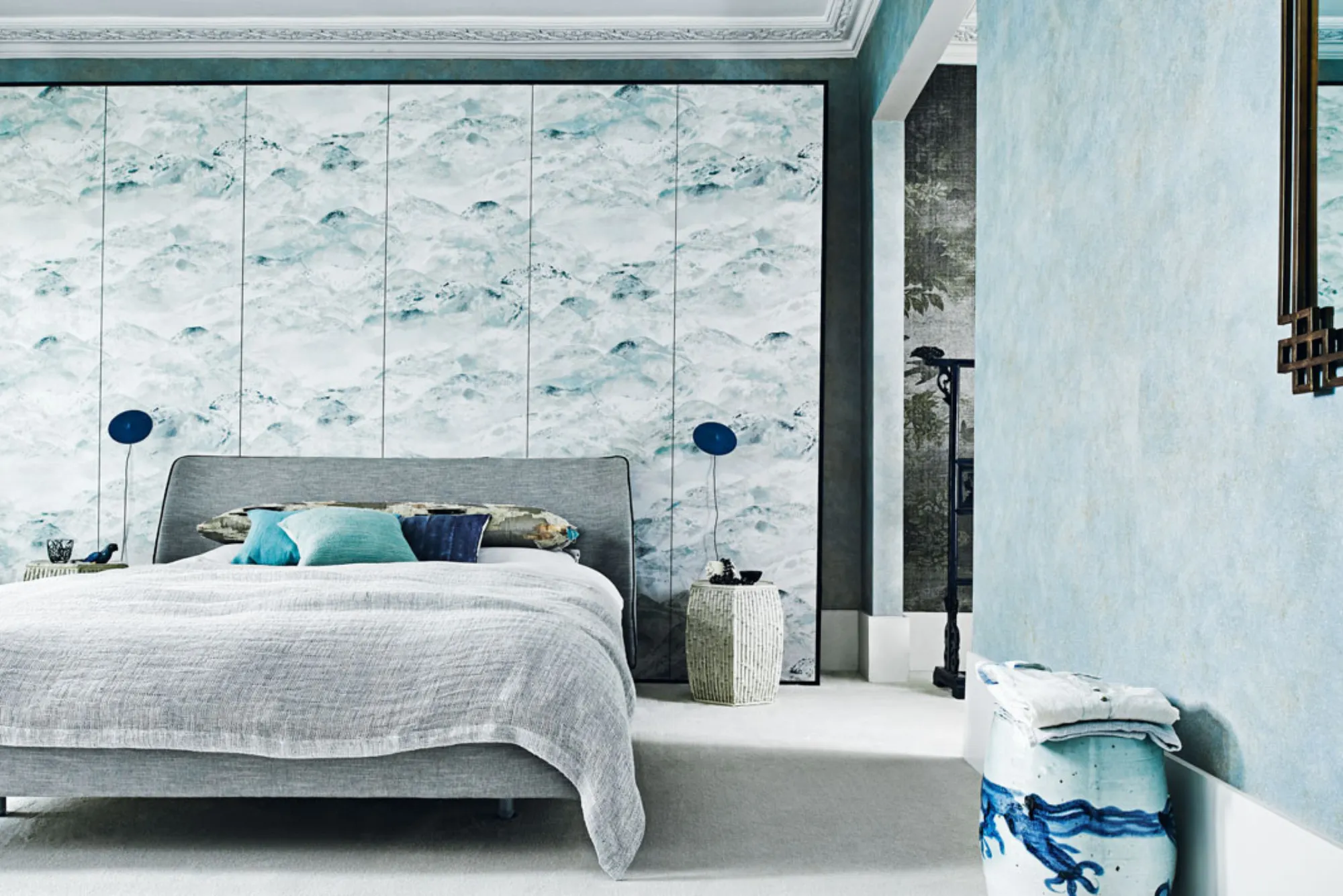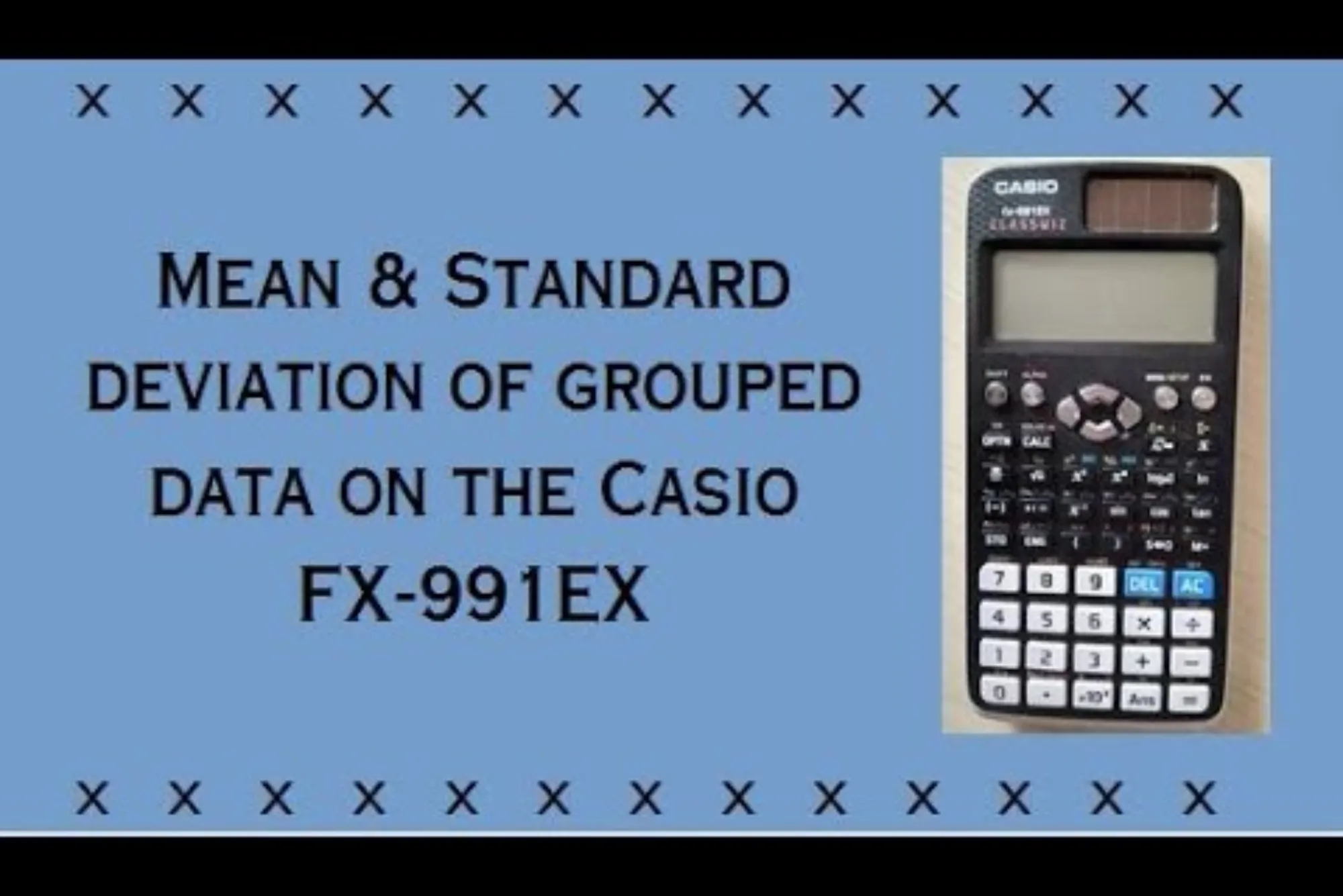Floor standing screens have become a crucial element in modern design, offering flexibility and functionality in a variety of environments. These screens, which are designed to stand on the floor rather than be mounted on walls, have evolved significantly in recent years. With advancements in technology and design aesthetics, floor standing screens now feature a range of innovative trends that enhance their usability, visual appeal, and integration into diverse spaces. This article explores the current design trends shaping floor standing screens and how they contribute to their effectiveness and versatility.
Innovative Materials for Floor Standing Screens
The materials used in floor standing screens play a crucial role in their design, durability, and functionality. Recent trends in material innovation focus on enhancing both the performance and aesthetic qualities of these screens.
Overview of Materials Used in Floor Standing Screens
Traditionally, floor standing screens were constructed using standard metals and plastics. However, the range of materials has expanded significantly. Modern floor standing screens now incorporate advanced materials such as tempered glass, aluminum alloys, and high-density polymers. These materials not only offer improved durability and a sleek appearance but also contribute to the overall design flexibility.
Advantages of New Materials
Sustainable Options: One of the key advancements in material technology is the emphasis on sustainability. Manufacturers are increasingly using recycled and eco-friendly materials in the construction of floor standing screens. For example, screens made from recycled plastics or sustainable bamboo not only reduce environmental impact but also align with contemporary design values.
Enhanced Durability: New materials such as tempered glass and advanced polymers offer increased resistance to scratches, impacts, and weather conditions. This durability is particularly important for screens used in high-traffic areas or outdoor settings.
Aesthetic Appeal: The use of premium materials contributes to the modern, sophisticated appearance of floor standing screens. High-quality finishes, such as brushed aluminum or glossed glass, enhance the visual appeal and make these screens a stylish addition to any space.
How Material Choice Influences Design Trends
The choice of materials in floor standing screens directly influences design trends. For instance, the shift towards minimalistic and sleek designs is supported by the use of thin, high-quality materials that reduce the visual bulk of the screens. Additionally, eco-friendly materials reflect a growing consumer preference for sustainable products, driving trends towards greener design practices.
Sleek and Minimalist Designs
Sleek and minimalist designs have become a defining characteristic of modern floor standing screens. This design approach focuses on simplicity, clean lines, and a streamlined aesthetic.
Characteristics of Minimalist Floor Standing Screens
Clean Lines and Simple Shapes: Minimalist floor standing screens often feature smooth, uninterrupted lines and geometric shapes. This design approach eliminates unnecessary embellishments and emphasizes functionality and form.
Thin Frames and Bezels: Modern floor standing screens are designed with thin frames or bezels, reducing the visual clutter and allowing the screen itself to take center stage. This design trend aligns with contemporary interior styles that prioritize clean, uncluttered spaces.
Neutral Colors: Neutral color palettes, such as white, black, or gray, are commonly used in minimalist designs. These colors help the screens blend seamlessly with various interior environments and maintain a sophisticated appearance.
Popular Design Elements
Floating Bases: Some minimalist floor standing screens feature floating bases that give the impression of the screen hovering above the ground. This design element enhances the screen’s modern look and creates a sense of lightness.
Integrated Cable Management: To maintain a clean appearance, many minimalist designs incorporate integrated cable management systems. These systems hide cables and connectors, ensuring a tidy and uncluttered look.
Examples of Minimalist Floor Standing Screens
Commercial Spaces: In corporate environments, minimalist floor standing screens are often used to display information or advertisements in a sleek, unobtrusive manner. Their clean design complements modern office interiors and enhances the professional atmosphere.
Retail Environments: Retailers use minimalist screens to showcase products or promotions without overwhelming the store’s design. The screens’ simple aesthetics allow them to integrate smoothly with various store layouts.
Smart Technology Integration
The integration of smart technology is a significant trend in the design of floor standing screens, enhancing their functionality and interactivity.
The Role of Technology in Modern Floor Standing Screens
Touchscreen Capabilities: Many modern floor standing screens feature interactive touch capabilities, allowing users to engage directly with the content. This functionality is particularly useful in environments such as information kiosks or interactive displays where user interaction is essential.
Voice Control and Gesture Recognition: Advanced screens are incorporating voice control and gesture recognition features, enabling hands-free operation and enhancing the user experience. These technologies facilitate more intuitive interactions and make the screens accessible to a wider audience.

Connectivity Features: Floor standing screens are increasingly equipped with Wi-Fi, Bluetooth, and HDMI ports, allowing seamless integration with other devices and networks. This connectivity supports real-time content updates, remote management, and synchronization with other smart systems.
Examples of Smart Features
Interactive Wayfinding: In public spaces such as airports or malls, floor standing screens with touch capabilities are used for interactive wayfinding. Users can search for information, navigate maps, and access other services directly from the screen.
Digital Signage: Smart technology enables floor standing screens to serve as dynamic digital signage solutions. Retailers and advertisers can update content remotely, ensuring that promotions and information are current and relevant.
Impact of Technology on Design Trends
The integration of smart technology has influenced design trends by driving the development of screens that are not only functional but also visually appealing. The need for built-in technology has led to sleeker designs with hidden components and streamlined interfaces, enhancing the overall user experience.
Customizable and Modular Floor Standing Screens
Customization and modularity are becoming increasingly important in the design of floor standing screens, offering flexibility and adaptability for various applications.
Benefits of Modular Design
Flexibility: Modular floor standing screens can be configured in different ways to suit various environments and needs. For example, modular screens can be assembled to create larger displays or adjusted to fit specific spatial requirements.
Scalability: Modular designs allow for easy expansion or reconfiguration. This scalability is beneficial for applications that may need to change or grow over time, such as trade shows or retail installations.
Popular Customization Options
Interchangeable Panels: Some floor standing screens feature interchangeable panels that allow users to change the appearance or functionality of the screen. This customization option enables the screen to adapt to different branding or design requirements.
Adjustable Height and Angle: Modular screens often come with adjustable stands that allow users to change the height and angle of the display. This feature ensures that the screen can be positioned for optimal viewing in various settings.
Case Studies of Customizable Floor Standing Screens
Exhibition Displays: At trade shows or exhibitions, customizable floor standing screens are used to create eye-catching and adaptable displays. The ability to reconfigure the screens allows exhibitors to present their content in engaging and innovative ways.
Corporate Lobbies: In corporate environments, customizable screens are used in lobbies to display company information, news, or interactive features. The screens can be tailored to match the company’s branding and design preferences.
Sustainable and Eco-Friendly Designs
Sustainability is a key consideration in modern design, and floor standing screens are increasingly reflecting this trend through the use of eco-friendly materials and practices.
Focus on Sustainable Materials and Practices
Recycled Materials: Manufacturers are using recycled plastics and other sustainable materials in the construction of floor standing screens. These materials reduce the environmental impact of production and support a circular economy.
Low-VOC Finishes: Low-VOC (Volatile Organic Compounds) finishes are used to minimize harmful emissions during the manufacturing process. These finishes contribute to better indoor air quality and align with environmentally friendly design practices.
Examples of Eco-Friendly Design Trends
Energy-Efficient Components: Many floor standing screens are designed with energy-efficient components, such as LED backlighting, which reduce power consumption and operational costs. These screens not only consume less energy but also have a longer lifespan.
Sustainable Packaging: Eco-friendly packaging solutions are also being adopted, with manufacturers using recyclable or biodegradable materials for packaging. This approach reduces waste and supports sustainable practices throughout the product lifecycle.
How Sustainability is Shaping the Future of Floor Standing Screens
The emphasis on sustainability is driving innovations in material selection, production processes, and overall design. As consumers and businesses become more environmentally conscious, the demand for eco-friendly floor standing screens is likely to grow, influencing future design trends and technological advancements.
Bold Colors and Patterns
While minimalist designs remain popular, there is also a trend towards incorporating bold colors and patterns in floor standing screens. This approach adds a dynamic and visually striking element to the screens.
Use of Color and Patterns in Modern Floor Standing Screens
Bright Colors: Floor standing screens with bright, vibrant colors can make a strong visual impact. These colors are often used in retail environments or marketing displays to attract attention and create a memorable impression.
Graphic Patterns: Some screens feature graphic patterns or artistic designs that enhance their visual appeal. These patterns can be used to reinforce branding, create thematic displays, or simply add an artistic touch to the environment.
How Bold Designs are Influencing Current Trends
Branding and Identity: Bold colors and patterns are often used to reinforce brand identity and create a cohesive visual experience. Customizable screens allow businesses to incorporate their brand colors and logos, making the screens an integral part of their marketing strategy.
Creative Environments: In creative environments such as design studios or entertainment venues, bold designs add character and energy to the space. These screens serve as statement pieces that contribute to the overall ambiance and aesthetic.
Examples of Floor Standing Screens with Striking Aesthetics
Retail Displays: Retailers use floor standing screens with bold colors and patterns to create eye-catching displays and attract customers. These screens often feature dynamic visuals and engaging content that enhance the shopping experience.
Event Installations: At events and exhibitions, floor standing screens with creative designs are used to create immersive and visually stimulating environments. The screens become a focal point of the event, contributing to its overall success.
Integration with Interior Design
The integration of floor standing screens into various interior design styles is an important trend, reflecting the need for these screens to complement their surroundings.
How Floor Standing Screens are Integrated into Various Interior Styles
Modern Interiors: In modern spaces, floor standing screens are often designed with sleek, minimalist aesthetics that align with the clean lines and simple forms characteristic of contemporary design.
Traditional Interiors: In traditional settings, screens with classic finishes or decorative elements can be used to blend seamlessly with the established decor. These designs incorporate traditional materials and details to create a harmonious look.
Examples of Floor Standing Screens that Complement Different Design Themes
Corporate Offices: In corporate offices, floor standing screens with neutral colors and minimalist designs complement professional interiors. These screens provide functional displays while maintaining a sophisticated appearance.
Hospitality Spaces: In hotels or restaurants, floor standing screens with customizable finishes and decorative elements can enhance the ambiance and provide information or entertainment to guests.
Tips for Choosing the Right Floor Standing Screen for Your Space
Consider the Aesthetic: Choose a screen design that complements the existing interior style. Consider factors such as color, finish, and overall design to ensure the screen integrates smoothly with the space.
Match the Functionality: Ensure that the screen’s features and functionality align with the intended use. Whether for interactive displays, digital signage, or information dissemination, select a screen that meets your specific requirements.
Evaluate the Size and Placement: Consider the size of the screen and its placement within the space. Ensure that the screen is appropriately sized for the area and positioned for optimal visibility and impact.
Ergonomics and User Experience
Ergonomics and user experience are critical considerations in the design of floor standing screens, particularly in environments where ease of use and accessibility are important.
Importance of Ergonomics in the Design of Floor Standing Screens
User Accessibility: Ergonomic design ensures that floor standing screens are accessible and easy to use for all individuals. Features such as adjustable height and tilt angles contribute to a comfortable user experience.
Ease of Interaction: Touchscreen capabilities and intuitive interfaces enhance user interaction, making it easier for users to engage with the content. Ergonomic design also considers factors such as screen placement and viewing angles to reduce strain and improve usability.
Features that Enhance User Experience
Adjustable Stands: Many floor standing screens come with adjustable stands that allow users to modify the height and angle of the display. This feature ensures that the screen can be positioned for optimal viewing and interaction.
Intuitive Interfaces: Modern screens often feature user-friendly interfaces that make navigation and interaction straightforward. Intuitive controls and touch capabilities contribute to a seamless user experience.
Trends in Ergonomic Design for Floor Standing Screens
Adjustable and Modular Stands: The trend towards adjustable and modular stands reflects a focus on ergonomics and user comfort. These stands allow users to customize the screen’s position and adapt it to different uses and settings.
Enhanced Interaction Features: Advances in interaction technology, such as voice control and gesture recognition, contribute to a more intuitive and accessible user experience. These features cater to a diverse range of users and improve overall usability.
This comprehensive article covers the major design trends in floor standing screens, providing insights into materials, aesthetics, technology, and more. If you need any adjustments or further details, feel free to let me know!




